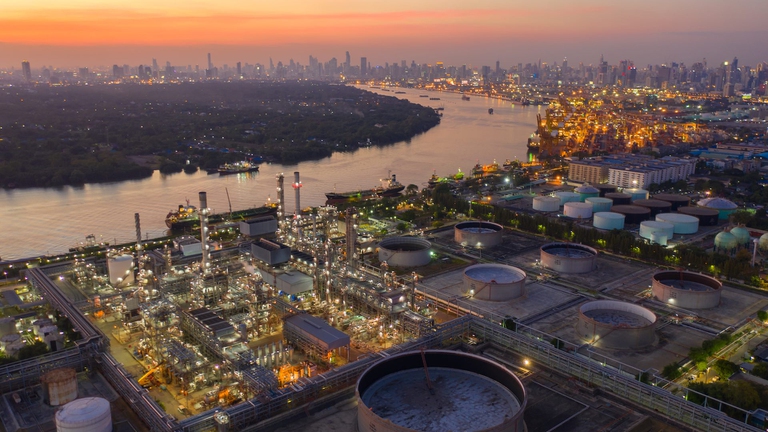https://www.lifegate.it/qatar-gas-calo
- |
- Qatar's Energy Minister announced, during a press conference, the plan to expand the world's largest gas field, the North Field.
- The announcement comes as Europe hits its lowest level of gas production in 10 years.
The Qatar has just announced his new plans for expand production of the largest natural gas field of the world, the North Field, which already today guarantees the emirate the world record for exports of liquefied natural gas, LNG.
The new North Field expansion plan, called North Field West, will add an additional 16 million tonnes of LNG per year to existing plans, said Qatari Energy Minister Saad Sherida al-Kaabi, who also heads of the state company QatarEnergy.The overall expansion of the North Field from the current 77 million tons of gas to 142 million tons, represents an 85% increase in production.The QatarEnergy boss also said the company will "immediately begin" engineering work to ensure the expansion is completed by 2030.

The supremacy of Qatar's LNG
The North Field is part of the world's largest gas exploration field, which Qatar shares with Iran (the Iranian part is called South Pars).Qatar is one of the world's leading LNG producers together with the United States, Australia and Russia.Asian countries led by China, Japan and South Korea have long been the main market for Qatari gas, but demand has also grown from European countries after the war in Ukraine put supplies in doubt.
The recent expansion plans follow a series of long-term Qatari LNG supply agreements:Earlier this month, Qatar said it would supply 7.5 million tonnes per year of LNG for 20 years to the Indian company Petronet, starting in 2028.As at the end of January, QatarEnergy announced an agreement with the US company Excelerate energy to supply 1.5 million tonnes per year for 15 years to Bangladesh.Last year, Qatar signed agreements with China's Sinopec Total in France, the Shell in Great Britain and theEni in Italy.
But gas consumption in Europe has fallen to its lowest levels
Competition for LNG has intensified since the beginning of war in Ukraine, with Europe, in particular, which from 2021 to today has tried to replace Russian gas supplies.And yet, second the latest edition of the Lng Tracker of the Institute for energy economics financial analysis (IEEFA), in 2023 gas consumption in Europe fell to the lowest level in 10 years, standing at 452 billion cubic meters (bcm), down compared to 472 in 2014.In the last two years alone, consumption has fallen by 20 percent.A decline due, according to the report, above all to the measures of energy saving and the increase in electricity produced by renewable sources.
This proves that there is no need to replace Russian gas with other gas, Qatari in this case.Although Italy has reduced gas consumption by 14.4 billion cubic meters in the last two years (only Germany has done more), our country is proceeding with the construction of two new LNG import terminals, a Piombino and Ravenna.In particular, the new terminal of Piombino recorded a utilization rate of just 42 percent in 2023.
For the Ieefa, current and future trends in gas demand should lead to a peak demand for liquefied natural gas as early as 2025, at least in Europe.Last year, LNG demand on the continent remained stable but the average utilization rate of liquefied gas terminals was 58.52 percent in 2023, down from 62.94 percent in 2022.
Dealing with reality, however, is not in the plans of the Persian Gulf energy giant, as al-Kaabi said that the assessment of Qatari gas reserves will continue and production will be further expanded.In short, as long as there is gas, Qatar seems to want to move forward on the path of fossil fuels.With all due respect to the risks for the planet and for all of us.
